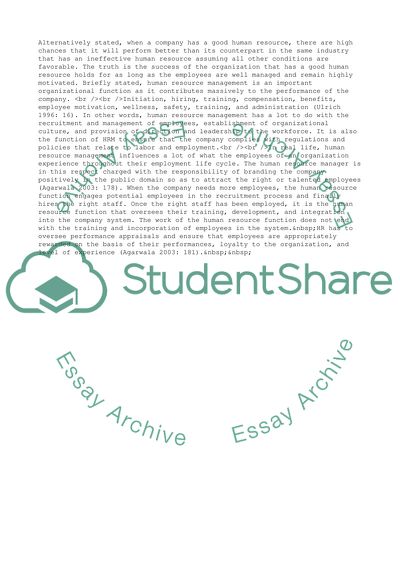Cite this document
(Human Resource Management and Organizational Performance Coursework Example | Topics and Well Written Essays - 1500 words, n.d.)
Human Resource Management and Organizational Performance Coursework Example | Topics and Well Written Essays - 1500 words. https://studentshare.org/management/1811391-what-precisely-is-hrm-and-what-evidence-is-there-to-support-the-contention-that-it-is-linked-in-some-way-to-improvements-in-a-firms-performance
Human Resource Management and Organizational Performance Coursework Example | Topics and Well Written Essays - 1500 words. https://studentshare.org/management/1811391-what-precisely-is-hrm-and-what-evidence-is-there-to-support-the-contention-that-it-is-linked-in-some-way-to-improvements-in-a-firms-performance
(Human Resource Management and Organizational Performance Coursework Example | Topics and Well Written Essays - 1500 Words)
Human Resource Management and Organizational Performance Coursework Example | Topics and Well Written Essays - 1500 Words. https://studentshare.org/management/1811391-what-precisely-is-hrm-and-what-evidence-is-there-to-support-the-contention-that-it-is-linked-in-some-way-to-improvements-in-a-firms-performance.
Human Resource Management and Organizational Performance Coursework Example | Topics and Well Written Essays - 1500 Words. https://studentshare.org/management/1811391-what-precisely-is-hrm-and-what-evidence-is-there-to-support-the-contention-that-it-is-linked-in-some-way-to-improvements-in-a-firms-performance.
“Human Resource Management and Organizational Performance Coursework Example | Topics and Well Written Essays - 1500 Words”. https://studentshare.org/management/1811391-what-precisely-is-hrm-and-what-evidence-is-there-to-support-the-contention-that-it-is-linked-in-some-way-to-improvements-in-a-firms-performance.


